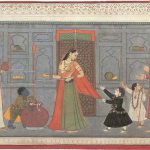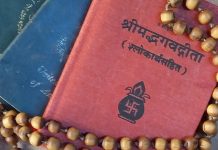Where’d We Get This Zany Idea? Hindus got it from the Europeans. According to several sources, the present dowry practice in India can be traced only to the 19th century – likely because that is when Indians observed the full-fledged practice of dowry among the British rulers. Here are some excerpts from a wonderfully, enlightening book, The Marriage Bargain, Women and Dowries in European History. “In France, the dowry was almost a universal institution, even among servants, laborers and tenant farmers, until the interwar era (1918-1939). Only the poorest urban industrial workers had no dowries, and as a result many of them did not marry at all. “For the great majority of the bourgeoisie (middle class) marriage is the greatest financial operation of their lives.” Wrote an observer of the French scene in 1927. “What was the status of the daughter whose birth ‘ filled a father’s heart with fear’ (Dante, Renaissance poet, 1265-1321 C. E. because of the large dowry which her marriage would require?” (source: The Marriage Bargain, Women and Dowries in European History. By Marion A. Kaplan. Harrington Park Press. 28 East 22 Street, New York, 100010. USA and Hinduism Today).
The concept of stri dhan in which gifts –usually jewelry, including often a quarter pound of gold–was given to the bride by her family, in order to secure some personal wealth for her when she married. This jewelry remained her personal property throughout the marriage, providing some security in case of her husband’s death or other calamity. However, in approximately the 19th century, under the British rule, the loving practice of stri dhan was joined by the very much different concept of dowry. Dowry became first an expected, then a demanded, offering given by the bride’s family to the groom’s family at the time of marriage. Whereas stri dhan is considered the property only of the woman, passed matrilineally, dowry is not.
Please refer to the book “Dowry Murder: The Imperial Origins of a Cultural Crime” – By Veena Talwar Oldenburg. The author argues that ‘these killings are neither about dowry nor reflective of an Indian culture or caste system that encourages violence against women. Rather, such killings can be traced directly to the influences of the British colonial era. In the pre-colonial period, dowry was an institution managed by women, for women, to enable them to establish their status and have recourse in an emergency. As a consequence of the massive economic and societal upheaval brought on by British rule, womens’ entitlements to the precious resources obtained from land were erased and their control of the system diminished, ultimately resulting in a devaluing of their very lives.’










